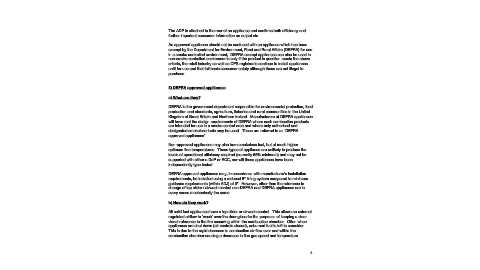Page 57 - Domestic Smoke Nuisance and Emissions Final_Neat
P. 57
The ADP is attached to the rear of an appliance and confirms both efficiency and
further important consumer information on output etc.
An approved appliance should not be confused with an appliance which has been
exempt by the Department for Environment, Food and Rural Affairs (DEFRA) for use
in a smoke controlled environment, DEFRA exempt appliances can also be used in
non-smoke controlled environments only if the product in question meets the above
criteria, the retail industry as well as CPS registrants continue to install appliances
unfit for use and that fail basic consumer safety although these are not illegal to
purchase.
3) DEFRA approved appliances
a) What are they?
DEFRA is the government department responsible for environmental protection, food
production and standards, agriculture, fisheries and rural communities in the United
Kingdom of Great Britain and Northern Ireland. Manufacturers of DEFRA appliances
will have met the design requirements of DEFRA where such combustion products
are intended for use in a smoke control area and where only authorised and
designated smokeless fuels may be used. These are referred to as ‘DEFRA
approved appliances’.
Non-approved appliances may also burn smokeless fuel, but at much higher
optimum flue temperatures. These types of appliance are unlikely to produce the
levels of operational efficiency required (currently 65% minimum) and may not be
supported with either a DoP or ECC, nor will these appliances have been
independently type tested.
DEFRA approved appliances may, in accordance with manufacturer’s installation
requirements, be installed using a reduced 5″ lining system compared to minimum
guidance requirements (within ADJ) of 6″. However, other than the reference to
change of top slider / airwash control non-DEFRA and DEFRA appliances are in
every sense mechanically the same.
b) How do they work?
All solid fuel appliances have a top slider or airwash control. This allows an external
regulated airflow to ‘wash’ over the door glass for the purposes of keeping a clear
visual reference to the fire occurring within the combustion chamber. Often when
appliances are shut down (air controls closed), unburned fuel is left to smoulder.
This is due to the rapid decrease in combustion air flow over and within the
combustion chamber causing a decrease in flue gas speed and temperature.
5

